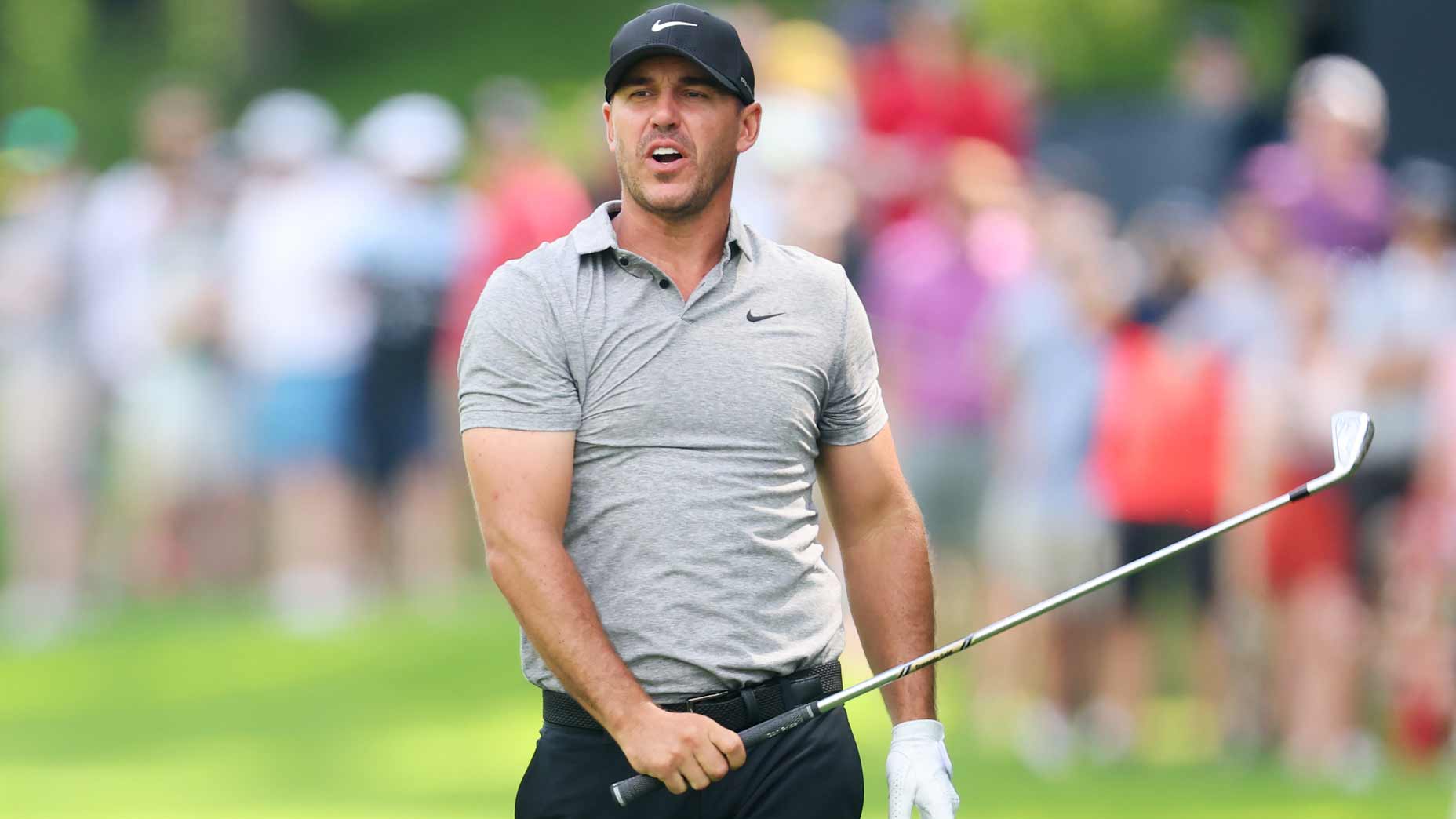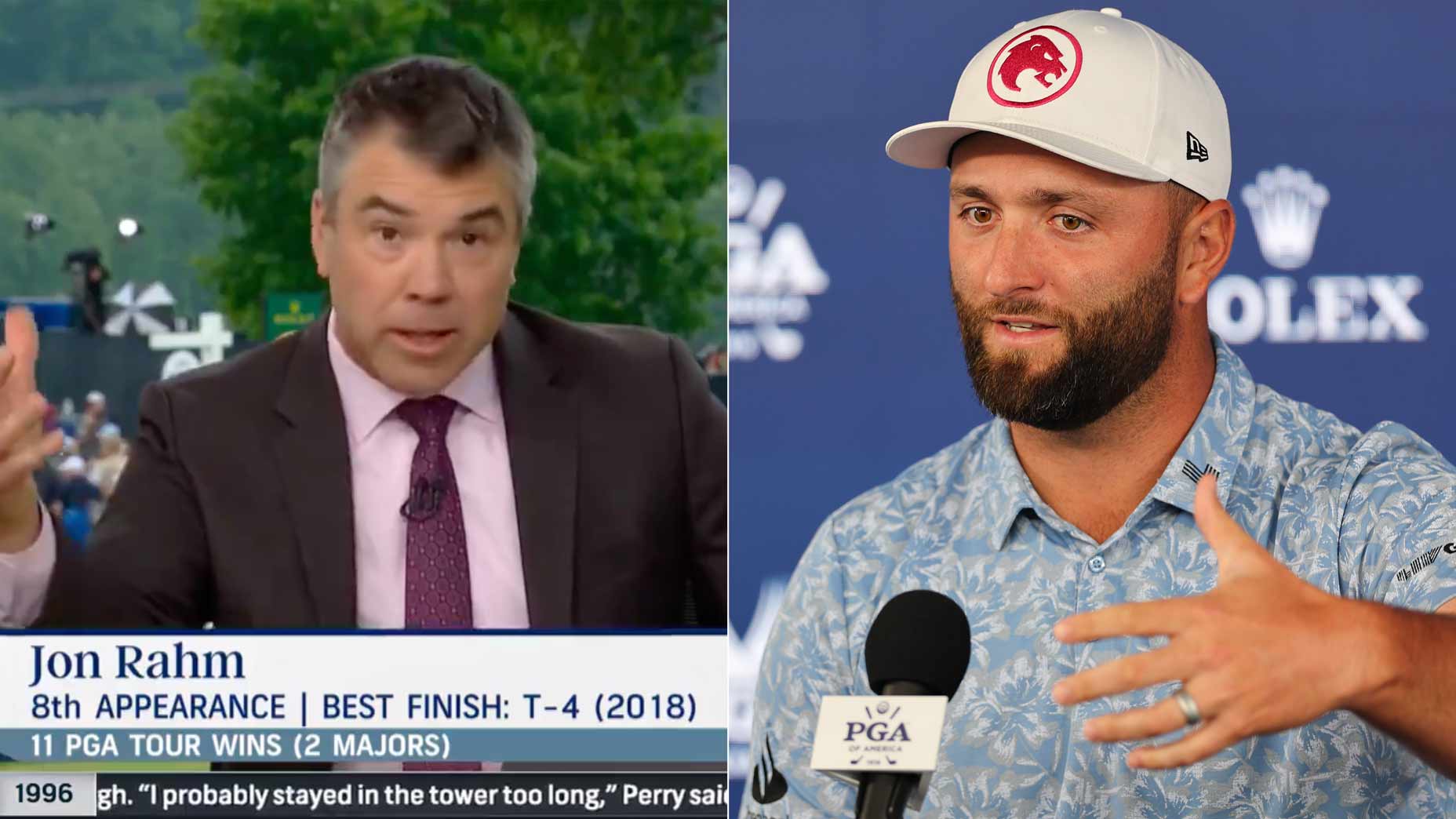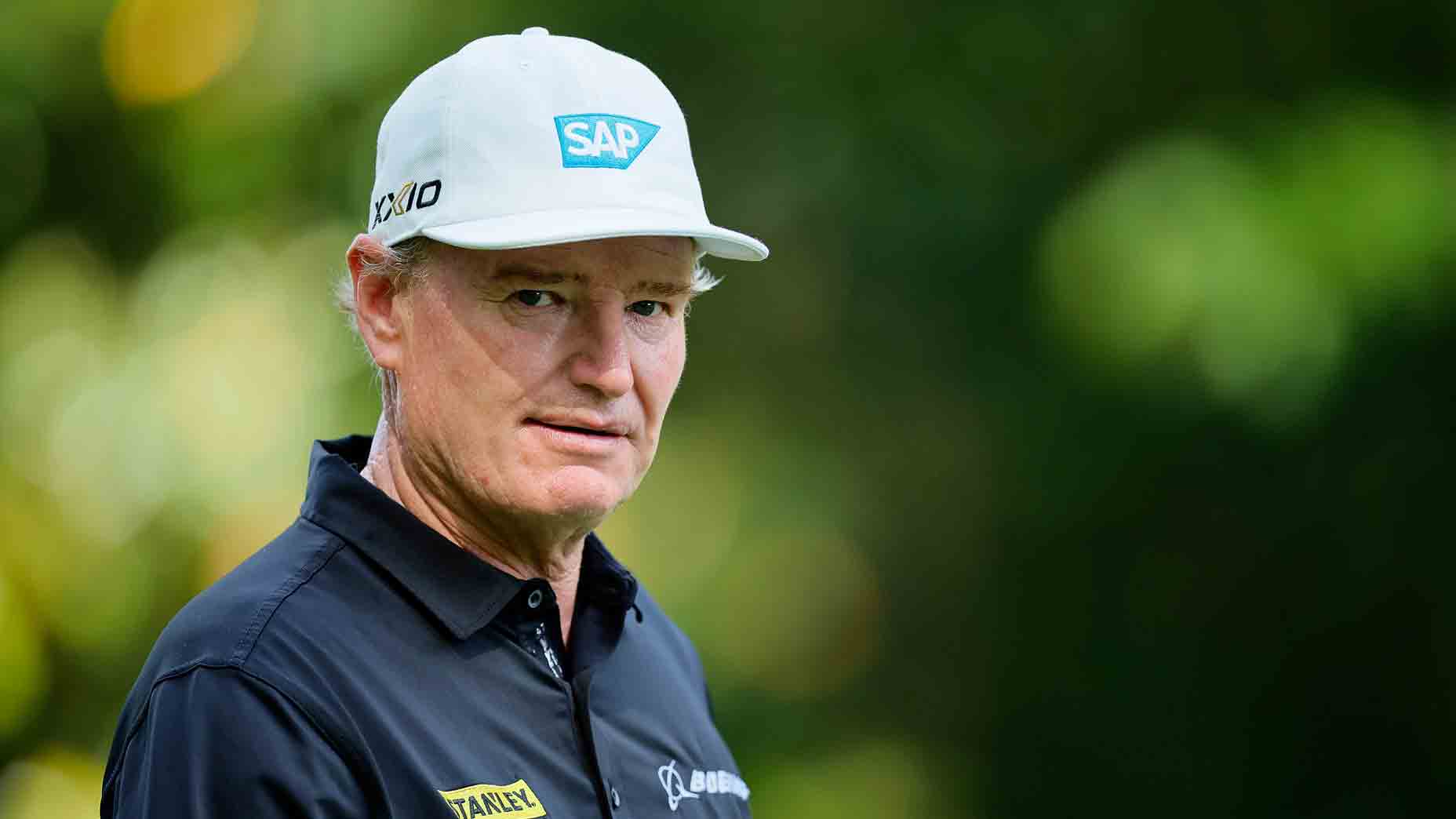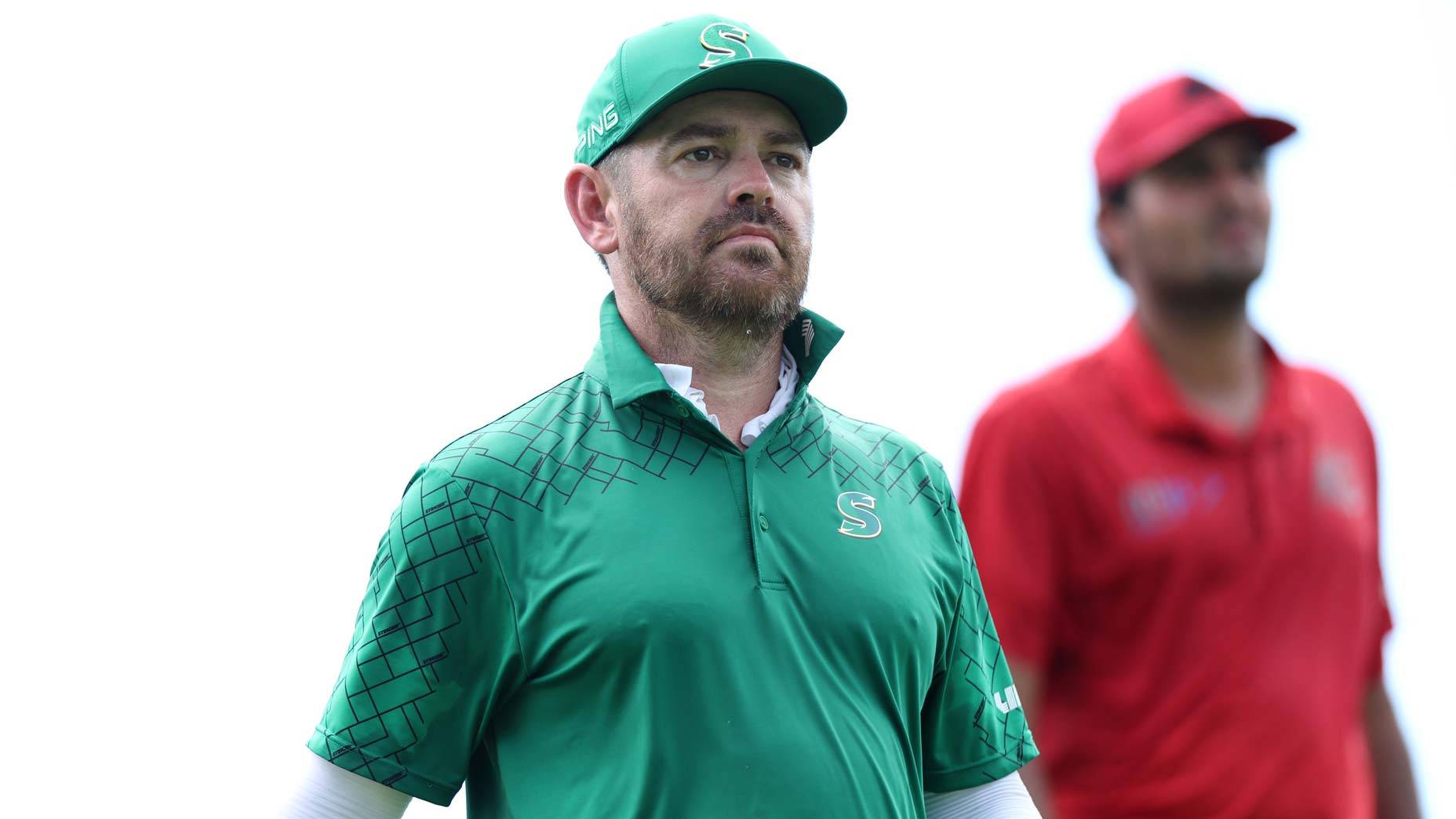LIV Golf NYC ‘upfronts’ offer clues as merger questions swirl
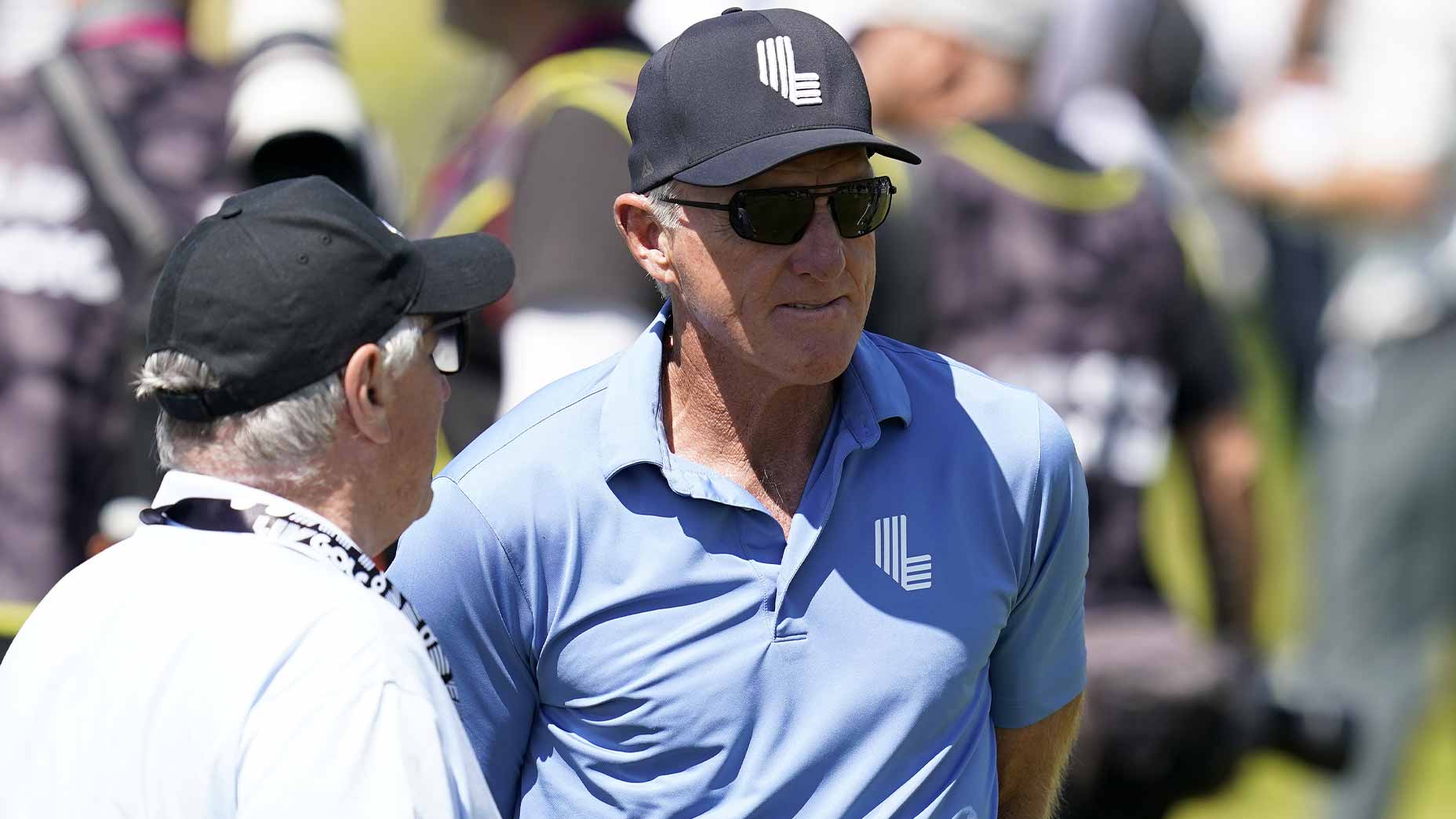
LIV Golf hosted 'upfront' presentations for advertisers in New York this week.
Getty Images
Those in a certain subsection of the New York City media elite know it’s wise not to trust the phrase “upfronts.”
At their core, upfronts are an act. They’re a high-budget spectacle thrown by big-media companies to woo advertisers and marketing partners for the year ahead. The goal is to drum up as much excitement for the year (and years) ahead as possible, hopefully enticing some big-budget partners in the process to open their purses a little wider than the year before.
In other words, upfronts traffic in hype, which is the sort of thing that doesn’t immediate generate revenue or deliver shareholder value but hopes to down the road. Hype does have a clear and measurable cost, though: at most upfront presentations hype can be counted in cold, hard cash. Annually, network upfronts dominate expansive spaces like Madison Square Garden, Radio City Music Hall and the Beacon Theater; welcome lengthy red carpet celebrations (beginning at 9 in the morning); and feature performances from acts like Kelly Clarkson, the Jonas Brothers and … Pat McAfee.
For all these reasons, it’s wise not to trust the narratives that originate during upfront season too deeply. They are little more than the story a media company would like to tell about itself to the world. A story, mind you, the company hopes will help generate more advertising revenues and larger profits.
But last week, the story coming from one upfront out of New York City broke the mold when it provided some tangible information for the public. This upfront yielded clues about the framework agreement between the PGA Tour and the Saudi Public Investment Fund, clues that inform some of how the agreement is being treated inside the halls of the league principally affected by it: LIV Golf.
Earlier this week, LIV Golf threw its first-ever “upfront” presentation to advertisers in the Lower East Side of Manhattan — an effort that included live performances from league commissioner Greg Norman, broadcasters Arlo White and David Feherty, and players Dustin Johnson, Cam Smith, Talor Gooch and Bryson DeChambeau. The message, according to a handful of social media posts and a report in the Washington Post?
We’re not going anywhere.
At the upfront, the outlook from LIV remained rosy, with executives reflecting on significant early successes and forecasting yet more growth to come in the league’s 2024 season. In the multi-hour presentation, LIV’s message was relentless optimism, even as the agreement that could spell doom for the league’s future loomed ominously on the horizon.
Officially, LIV Golf has been given no edict about its future from the PGA Tour, PIF leader Yasir Al-Rumayyan, or anyone else. There’s no guarantee that the league will continue as scheduled for the 2024 season or beyond. But the language in the preliminary agreement between the PIF and the Tour appeared to give Tour commissioner Jay Monahan final say over the golf aspects of the deal — LIV’s future included. Considering the obvious conflicts of interest the two leagues present, it seemed likely that LIV would find itself ripe for heavy modification if a definitive agreement was reached.
During a Senate hearing on the merger that occurred while Monahan was on medical leave, the Tour poured gasoline on that speculation when acting commissioner Ron Price indicated that LIV commissioner Greg Norman would be removed from his post if the agreement were finalized. Without Norman, LIV would be left with only one obvious champion in the “NewCo” formed between the PIF and the PGA Tour: Al-Rumayyan, the chairman of the board — and also the person who agreed to the original deal with the PGA Tour.
This, it turns out, is what made the bullish nature of LIV’s upfront presentation so revealing. If LIV truly is on the brink, what incentive does the PIF have to bankroll a lavish presentation to advertisers for the new season, let alone the billions it will take to stage the ’24 season? Would it not be wiser to keep operations in a holding pattern while negotiations continue?
The answer, if you listen to LIV, runs deeper than the surface of a balance sheet. LIV, they say, is Al-Rumayyan’s “baby,” and he’s not quite ready to part with it just yet. Perhaps, as Norman has indicated, Al-Rumayyan will negotiate LIV’s lasting future as part of a definitive agreement. Perhaps it won’t be so bad for LIV after all.
“Have we had head winds? No s—, we’ve had head winds,” Norman said, according to The Post. “It’s a lot of head winds, but you got to get those head winds because when people started to understand what we got, and you can speak to the players about this later on. … They got it straight away. They recognized it, they saw the PowerPoint presentation, they understood into the future. They weren’t looking one year into it, two years into it, three years into it — they were looking many years into it.”
There is an alternate theory, though, that paints a slightly darker picture for the upstarts. That theory suggests the PIF is posturing to show the Tour it’s serious about LIV if a definitive agreement is not reached. If posturing is the goal, projecting optimism and excitement about the future of the league provides a lot of leverage, particularly with Tour leadership all but admitting that LIV could “bleed” the Tour “dry” in just five years’ time.
It helps that the true reasoning behind LIV’s actions only needs to be known by a handful of key people, Al-Rumayyan among them. From there, the message can be whatever the leaders of the PIF choose to deliver, and whatever the leaders of LIV choose to believe. (If the last 18 months have shown us anything, it’s that the league’s executives do not lack for bluster.) It also helps that there might be some truth behind LIV’s optimism for the time being. After all, until a definitive agreement is reached, the framework isn’t worth the paper it was written on.
This, it seems, was the most revealing piece of the upfronts: nobody knows — maybe not even those tasked with making the final decision. Maybe the meetings were little more than a bluff, a move to maintain an expensive but important upper hand in a deeply serious negotiation. Or maybe they were something more than that: our first glimpse into a strange, two-tour future in professional golf.
The answer, as often seems to be the case these days, rests somewhere up Al-Rumayyan’s sleeve.






